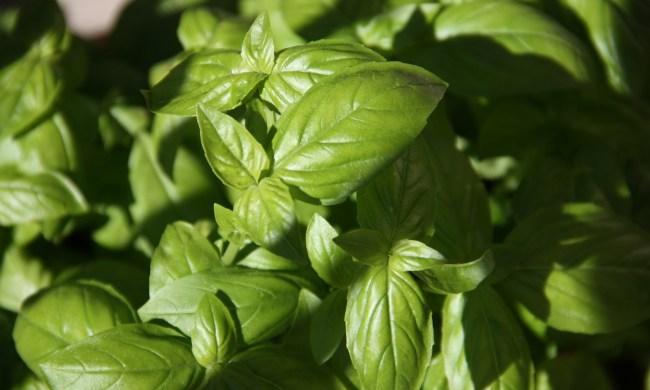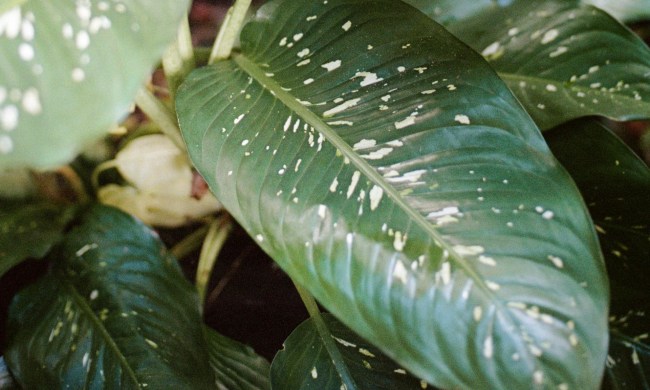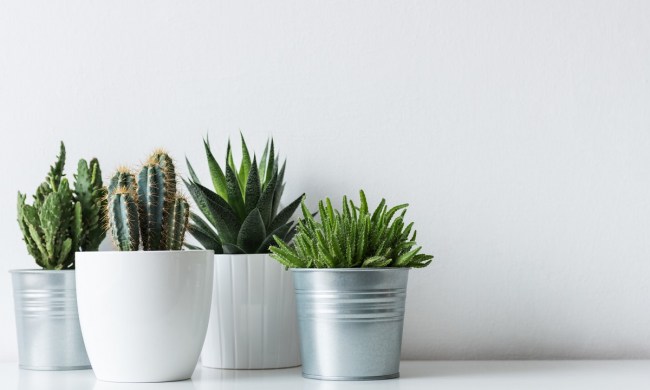Parsley and cilantro are two herbs that are commonly used in professional and home cooking. Chances are, you already have them on the shelf in your pantry (especially if you grow them at home) and have noticed something intriguing about them: They don’t look all that different. So why are they used in different recipes? The flat leaves of Italian parsley have a comparable shape to those of cilantro. At first glance, it’s easy to think they have similar flavors. But substituting one for the other doesn’t always work as expected.
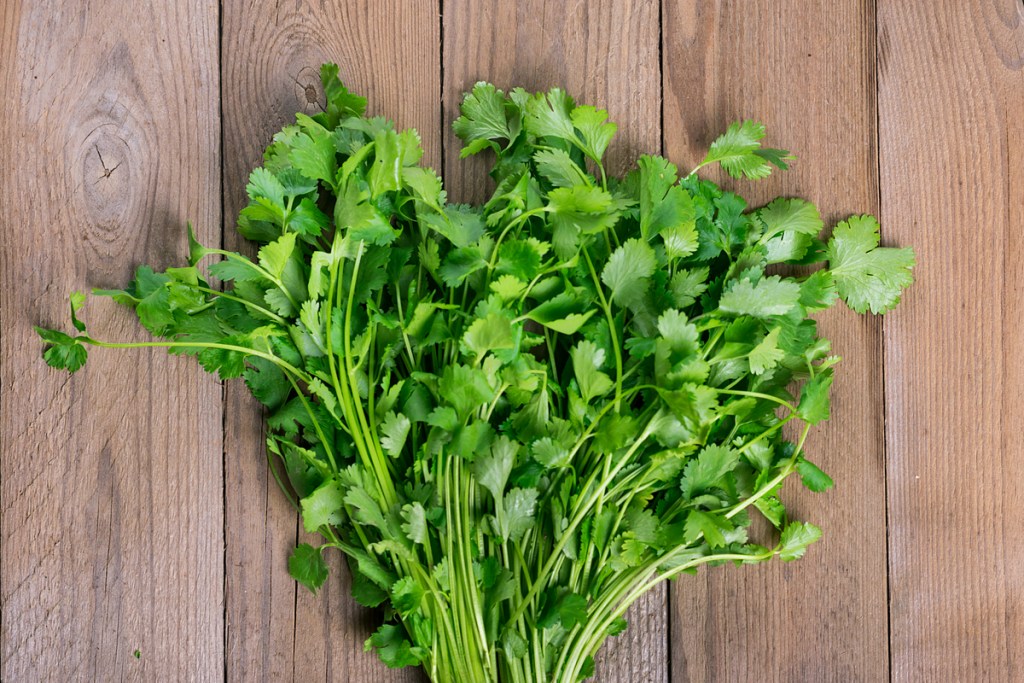
Why are they confused for each other?
Even though parsley and cilantro look close to identical, they aren’t. They’re both bright green, leafy herbs that happen to come from the same family (Apiaceae), which is the main reason their appearances are deceiving; however, once you know the slight variations, it’s easy to tell them apart and make sure you’re adding the right herb to your dish.
Italian parsley is the variety most easily confused with cilantro because they both have flat leaves. Although both are green, Italian parsley is darker and has pointed tips on the leaves whereas cilantro is brighter with rounded edges. If you don’t want to pick up and closely examine the leaves at the store, you can always pinch or rub a leaf to check the fragrance.
The difference between parsley and cilantro
Aside from the difference in appearance, the scent and taste of the two herbs are what sets them apart. Parsley’s mild fragrance is more herbal and fresh, whereas cilantro’s smell is a strong citrus. Italian parsley is a common ingredient in pizza and pasta sauce with a flavor that lends itself to enhancing and building upon other ingredients. Cilantro, on the other hand, is often regarded as “tasting like soap” to a lot of people. (Fun fact: Cilantro has aldehyde compounds that are present in soap, so the interpretation of its taste isn’t far off.)
Is it harder to grow one over the other?
Nope! Both parsley and cilantro are relatively easy herbs to grow indoors and outdoors. Just make sure you give them the appropriate amount of lighting and water. When setting up an indoor herb garden, always make sure that the containers you choose have good drainage. If there’s no drainage hole, you can add a one-inch layer of stones in the bottom before adding the potting mix. That will give excess water a place to drain to.
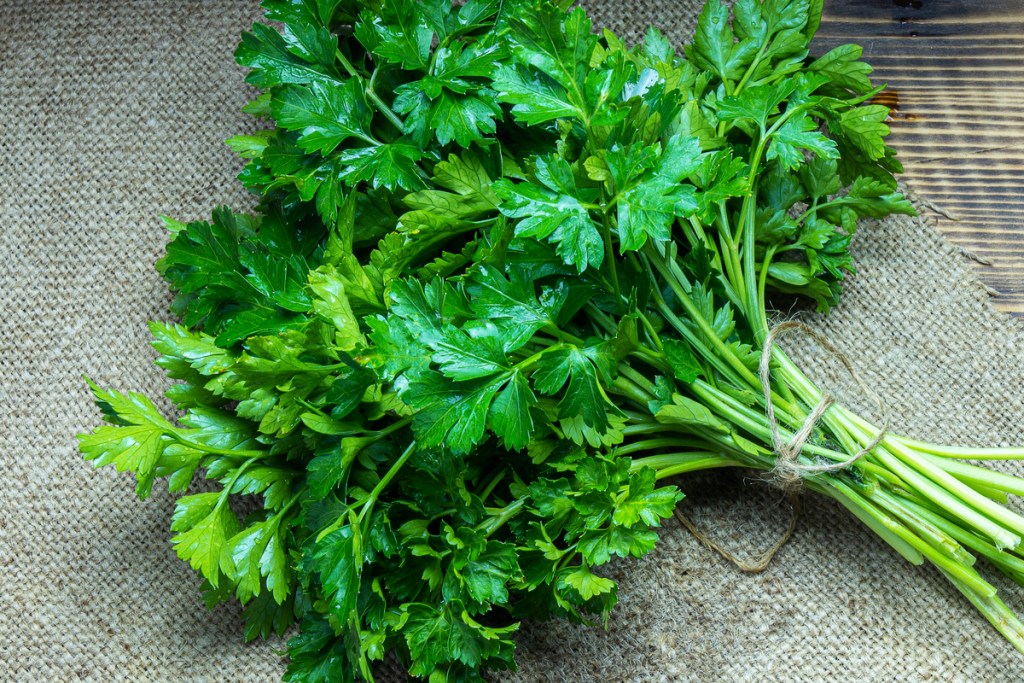
What’s the best use for parsley?
Because of its fresh, mild herbal flavor, parsley is used both as a garnish and as a seasoning (depending on the variety) that enhances the flavors in a dish. Used in Middle Eastern and Italian cooking, parsley complements lemon and garlic, as well as oregano and basil in sauces, soups, and stews. When it’s used as a garnish, parsley can be left on the stem or sprinkled on; however, when cooked, only the leaves of the herb are added to the dish — and they hold their flavor pretty well.
Where does cilantro shine?
Cilantro is commonly used in Mexican, Asian, and Indian cuisine. Where parsley is used to enhance, the spicy, citrusy flavor of cilantro is best utilized to add a unique taste to a dish. The stems and leaves of this herb contain a lot of flavor, so many cooks choose not to separate them; however, the stems are much tougher, so you may only want to leave them in when cilantro is being used as an enhancer without the intent of being eaten or when you finely chop it to add to a recipe.
Typically, cilantro is used in small doses due to its strong, unique taste. Unlike parsley, cilantro has its peak flavor when eaten raw as opposed to dried or cooked. It’s a great herb for seasoning dressings and dips. That’s why you’ll most often see it added at the very end of a recipe. The dish will still get the flavor, and the cilantro won’t have much time to cook.
Can you substitute one for the other?
Even though they come from the same family and have a similar appearance, you don’t usually want to substitute cilantro for parsley. Imagine making a pasta sauce: The recipe calls for parsley, which has a mild herbal taste, but you throw in some cilantro instead. Now, your Italian-based dish has a citrusy flavor that doesn’t pair well with oregano and basil (and could make the whole thing taste like soap to the right person). If you don’t have any parsley on hand, add a light amount of oregano or basil instead. And if the recipe already has those, then leave the extra herb out.
Substituting parsley for cilantro, on the other hand, is a bit more doable if you have the right ingredients. It isn’t an even substitution — cilantro is used for its strong flavor, and parsley is a mild herb. If you don’t have cilantro for your dish, you can substitute in the right combination of parsley and lemon or lime juice so that you’re still adding in the citrus in some way.
If it helps in the parsley versus cilantro debate, think of them as fraternal twins (although botanically, they’re cousins). They may look similar, they may have similar uses, but they’re individuals. Each herb has its own area of cooking and seasoning where it can best shine, and it wouldn’t be right to force cilantro to do the same thing you expect from parsley.
